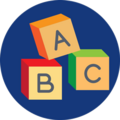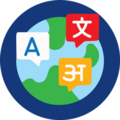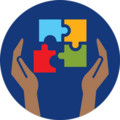Show Notes
In our third episode of Getting to the Core, Michelle Wagner and Stephanie DeVee discuss creative ways to make connections with students in a remote environment. Stephanie is not a newcomer to K-12 online learning; she has been teaching for an online school for several years now, and has refined her toolbox to overcome the challenges faces when trying to build rapport and trust with students from a distance.
Length - 26 minutes
Transcript
MICHELLE WAGNER: There is no denying that starting in March of 2020 education changed and the shifts that teachers have had to roll with and really try and prepare themselves for have been incredible. And as a teacher, it's so humbling to see the amazing work that's being done by Educators. And just how hard everyone is working. I feel really fortunate today to talk with an educator who I know has dedicated her life to helping not only just students but teachers as well. Really helping them embrace and understand this online model of education. I can't help us think about some of the important speakers that I've seen in the past and wonder what it is that they would say today if they were looking at education and trying to give advice or help to teachers might feel like you're struggling right now. And the one that I keep coming back to is Rita Pierson who is certainly one of my educational heroes, but she said, “Every child deserves a champion and adult who will never give up on them who understands the power of connection and insist they become the best they can possibly be.” With those words I truly believe those words are as true today in online education as they are when we are face-to-face. They are as true and remote as they are in person and I think that we can still strive to make connections. And just as Rita Pierson charged us so many years ago: Be the person who stands up for those kiddos; be the person in the corner who's rooting them on so that they can truly become all that they can possibly be.
I am here today with Stephanie DeVee, an instructional coach for Insight School of Michigan, which is under the Stride umbrella, which is formerly known as K12 Online Education. Hi, Stephanie.
STEPHANIE DEVEE: Hi
MICHELLE WAGNER: And Stephanie and I used to work together as teachers and Van Buren Public Schools many years ago, but I really wanted to pick your brain about what's happening in schools right now and how important it is to build relationships online. So thank you for for being with us today.
STEPHANIE DEVEE: Absolutely. Thanks for having me.
MICHELLE WAGNER: So can you tell us a little bit about the journey that brought you to online education?
STEPHANIE DEVEE: Absolutely. So as you know, when we work together, my first experience teaching was in brick-and-mortar at Van Buren at South Middle School and from there. I ventured off into some of the National Heritage charter schools that doing some Title 1 work and then honestly for me what really launched me into an online environment would just some of my own health issues that were just making it really hard to be in a classroom all day with very little breaks and just unable to kind of manage some of my health concern at the time. I started looking into alternative in my fiancé, now husband, at the time. And my fiancé kind of stumbled across cage while when we were just randomly searching for like other ways that I could still get an income, still work, but work from home and we stumbled upon K12. And I applied and at the time I started in a program called National Math Lab for about five years and then transitioned into the current school that I work for now under the K-12 Stride umbrella, which is the Insight School of Michigan, based out of Lansing. And, in the last year have gone from a Title 1 math interventionist for the middle school and high school level in this past year just really launched into instructional coaching for the Insight School of Michigan
MICHELLE WAGNER: Awesome. So it sounds like online education was even a benefit to you in terms of health and well-being even before most of us were plunged into that world.
STEPHANIE DEVEE: Yeah, that was a big. I mean that was the push for me. My husband joined me about a year later just for him. It was more of not necessarily being happy where he wasn't looking for something else to advance his career. Do you know jump into something new and different once you do something for so long? You're kind of always looking for that next to new thing and I've really found over the years that before Covid hit and forced to look into virtual and need to do virtual. Most of our kids… it was either behavior issues, you know anxiety, ADHD, social issues, medical issues were usually the big things when we when we you know, you are welcome in connection calls of their kids… “What made you choose us?” Those are like the top ones and so I could really relate to students that you know chose to do online for medical reasons because there were days where I could still work and teach from home where if I was in a brick-and-mortar situation, I would have had to call in and use a sub.
MICHELLE WAGNER: It’s just so interesting because I know that just even in my own mind when I think about online education. It almost seems to be a new concept… something that we just learned existed this year. And I know that that's not the case. So it's very interesting to hear that for over a decade you've been in this environment and it's been going well.
STEPHANIE DEVEE: Right? Yeah, and I'm you know, there's people that were in another decade before me, you know, it's same thing. I thought of this novel concept this new thing that I stumbled upon 'cause I was looking for something different but really it had existed. It just wasn't, you know, unless you really had a need for it, I don't think it was something that people were looking for or even knew was out there.
MICHELLE WAGNER: And I think that is a perfect lead-in to this idea of may be why so many teachers don't feel necessarily prepared for online education. And I know that in your role as an instructional coach, you’re still helping teachers kind of navigate those waters. So, I was just wondering if you might be able to share a little bit about relationships and how important it is for teachers to build those relationships and we know that it's important in traditional settings, but also in virtual settings.
STEPHANIE DEVEE: Yeah, absolutely. The importance of it doesn't change and honestly, I would argue that it actually gets larger. It's more of an importance in the virtual environment. You have to work a lot harder at it. It doesn't feel as natural. That was always one of my concerns because I think if you go into the world of teaching, you do it because you love the kids. You love connecting with the kids you love those relationships, then you know that you're making it you know is what makes all the tough days worth it. And I was a little bit afraid. Was I going to be happy in a virtual setting, you know, really removed from the thing that made me fall in love with teaching in the first place? But honestly, I have continued to maintain relationships with students that I had, you know, 5, 6, 7 years ago. They’ll still call me or text me when they need something even though they're in a with different teachers and you know the same idea of when your old students would walk by your classroom and want to talk to you like that those relationships still exist 100%. But it absolutely looks different and it's more difficult because you don't have them within your four walls. You can't walk past them and know whether they're working or understanding, you know, you can't just walk past her desk and tap on the shoulder to get them re-engage back into your class. So, it is definitely a learning curve. It's not the same but it absolutely the relationship still exists in the online world and like I said, I would argue that sometimes it's even more important to make those connections virtually because you don't physically see the students, you know. There are times where I couldn't know that something was going on with the student just by the look on their face when they walked into the classroom, you know. You can't see that. At least, I know a lot of schools are using a Zoom platform. K12 Stride uses something called Blackboard Connect and we are launching into something different, you know within the next month where we can physically see our students’ faces. Up until now for the last 10 years, they've just been a name in our classroom when they login it puts their name on the board. So really having to be creative and inventive, which every teacher is learning that now. I think we hear virtually and think, “Aww…sweet, easy. I can sit here and work from home,” but everything that is about being a teacher, you know, is that hands-on… those relationships and it just makes it harder to achieve more, a little bit more complicated when you're in the online environment.
MICHELLE WAGNER: So what strategies might you offer a teacher who's may be struggling right now to build some of those relationships online?
STEPHANIE DEVEE: Our biggest thing… we refer to them as ‘enduring connection calls.’ That is our buzzword at you know, at K12/Stride. We need to connect with our students at least, you know at minimum, you know, once a month by picking up the phone old school, you know, when you get into the virtual environment is chatting with your students in the chat box. They might pick up the microphone and talk to you. But most of the time it's like chatting with them in a chat box or responding to emails and we just that is a way to feel like you're maybe connecting. But it's not the same as picking up calling into saying, “Hey, I'm just checking in. How’s everything going? Okay? How can I help?” Because each student is going to have their own road blocks when it comes to virtual learning, which may be the same as what you saw in the classroom, but they may be totally different as in the fact that…For us, we are in an at-risk school. So, for us to say like yes best practices is to have a desk and have a quiet space to work that's only yours so that you can fully focus on my class and there's no distraction. But the reality of the situation is they could be one of 14 in that home and that's just not possible for them to be sitting at a desk in a quiet room. So, they already have roadblocks and it's not about whether they want to be engaged. It's figuring out how to best suit this. So now, instead of I'm used to being in a classroom where I control the environment that my students learn in, you have zero control and if you have 40 students that are each learning in 40 different environments and have 40 different sets of distractions and you have to now help them learn how to time manage and how to manage their space and how to set alarms to make sure they're back in front of their computer. And, so that's part of that communication. But for us like, of course, connecting with them in live sessions is huge. But that's where it's easy because if they've shown up you kind of already have them there. But what about the kids that don't show up? What about the kids that don't sign in? What about the kids that you haven't seen in a week or two? We can't just go pluck them from the hallway or write a tardy pass or email… like you don't you don't have those things that you would have in a brick-and-mortar. So it's really about making those phone calls and creating those connections once they're in your class. Once you've gotten them to show up …figuring out how to do the same thing you doing brick-and-mortar find out enough about the student to know what’s on at home, to be able to check in with them, to be able to support them. Not only academically, but as a human being as something else being that person that is safe pretty not safe environment because the reality is some of our students are now learning from home in an unsafe environment at home. They don't have the school building, you know for the ones that have not necessarily chosen to choose virtual school this past year. They're trying to learn in an environment that isn't even safe. So, figuring out how to create that within your virtual classroom, even if it's only even if you only have an hour out of the day. You know, that's where it is absolutely a challenge. But figuring out, so, you know, sometimes we'll do surveys. We’ll send out a survey, you know, that the student can fill out. Tell me more about you? What are you interested in? What's a good number to contact you? Because sometimes the number they give the school might not be, you know, the one we have. With high school… So a lot of them have their own phone. So, it's not the same number that's in the system. But if we can text or call them straight to their phone, there's an app called the Remind app if they give you a phone number, even if it's a learning coach or a parent, we call them learning coaches, but a parent or guardian number you can send out like, “Hey remember class starts in fifteen minutes, or, “Hey, remember this assignment is due.” So those are like the mass ways that we use of like mass communication: so like that Remind app, the emails. But again, the big thing is that I can call on those enduring connection calls. It's not a phone call about, “Hey, you know Johnny has turned in this this and this, you know, it's not necessarily about whether they're doing well or not in school. It's just, “Hey, this is Ms. DeVee from Insight School of Michigan. I'm calling to check in on you guys. How are you? We know this is a crazy time to learn. How can I support you? What needs do you have?” For some of our kids, like, I have a student who is, you know, 19; trying to graduate, has two kids and has another one on the way. She works all day long and then she comes home and tries to do school in a virtual environment which is why she chose virtual. You know, how do I support? So, that conversation doesn't need to be like, “Hey, I haven't seen you in live class all week. What's happening?” You know, there's other supports that need to be there. And so, that's why we really label those as enduring connection calls. Or you're just saying, “I'm here, how can I support you?” And you're not diving in, and eventually, you can dive into how they're doing academically and how you can support them academically. But for most people right now, especially in the world of COVID, where everybody's lives had been turned upside down and if yours hasn't been touched your privileged. That most people's have been turned upside down and realizing that they just might need to know someone's on their side.
MICHELLE WAGNER: What I think that's a really interesting way to look at it, too. Because when you're making those enduring connection calls, it sounds like you are assuming best intentions and you're not starting off with the negative. And so often families don't hear from school personnel until something's gone wrong; until there's a problem. And so, this is a great way just to build those relationships early and keep them going and then also that idea of just the assumptions we hold and and letting those go and I really that the point that you made about 40 different learning environments.
STEPHANIE DEVEE: Yeah
MICHELLE WAGNER: That's powerful and we can't make assumptions because we don't know.
STEPHANIE DEVEE: Right.
MICHELLE WAGNER: I'm thinking about online educators in general. And we know that society and in the world right now has thrust this upon us all and teachers really didn't get a choice in the matter of whether or not they would be online educators. But when you think about successful online educators, I think that every teacher in America right now, is saying, “We’re just trying to do a good job at this.” Just wondering what it based on your experience, what are those characteristics that might make someone a successful online educator?
STEPHANIE DEVEE: You know, those are similar to just what makes you a successful educator. But as you know, I kind of touched on before it's not easy. I think I read a lot…it’s interesting. Even my educator friends that are now thrust into virtual are like, “Oh my gosh, Stephanie. I had no idea how hard this was. I work 10 times harder to run a virtual classroom than I did in a physical one, and I'm like spent.” You know, and that's what I feel like society itself needs to understand; like that the teachers like yes anybody that works with K12… They have chosen the virtual environment as their career. But the thousands and thousands and thousands of teachers in our state and our country that didn't have a choice and had to you know, they weren't working for a company who is built to run an online education. I just like want to give everybody a standing ovation because some of these school districts the virtual environment that they have created in six months… maybe less than that to be able to launch at the beginning of the school year, you know again, I work for a company who this is who they are. And this is all they do. And I think that, you know, first of all, I just want to remind people whatever is listening to this that you know teachers are amazing and to be able to fully switch everything that they've done you no veteran teachers that have taught for 20-plus years everything that they did for the last 20 years doesn't count in a virtual environment. You know what I mean? Like not doesn't count. It's not dismiss. I'm not trying to take away from their success, but they've had to fully reinvent themselves and reinvent education as they know it. And they're now no longer in that that, you know, even your most veteran teachers are feeling like beginning teachers are feeling like, “Okay. Well that worked in the classroom, but I can't sit here and hand out a worksheet to everybody,” or, “I can't stay here and you know do a building project because we're all in the same room.” And so, I think in order for teachers to continue to be successful even in virtual is still be inventive still make it creative. The default… and I still see it at our school… the default is to turn into a lecture teacher because you feel like that's kind of what your hand tied to. Like, it's more of a one... It's me on this video and a zoom room or whatever platform you're using and depending on your students, they may not engage with you that way so be careful not to slide into the just like, “Well, I'm just going to teach them the lesson and I'm going to step away.” You know, like I'm just going to give them this 30 minutes of instruction and then that's it. You know, like we're not in college yet. We're still elementary. We're still middle school. We’re still high school. You got to find out a way to get them involved. You know, our specific platform does allow for students to like write on the board. Like if they were to stand up and come right on the Whiteboard. And I know that Zoom has the annotate feature as well. If you're working from a program where you can send them to. Break out rooms are like heaven. I know that they're intimidating. They're still intimidating, even in our environment. Again, it depends on what platform you're using. But if you can figure out how to do small group breakout rooms, you can create a PowerPoint and you can have them work on a project with their classmates or answer a few questions on the board with their classmates. So, you're cultivating that classroom safety, too. That they're not just hearing from you there hearing from their other students as well. If you're in Zoom and everybody's on the board, they can write something down on a whiteboard and hold it up for you to see that can give you a thumbs up, thumbs down, thumbs in the middle… a lot of that stuff. If you're in the right platform that you would normally do in a classroom…still works in an online environment, you know. But I would challenge you to, you know, be creative. Look for online resources. You can still play videos for them and the like. I still remember being in school and the teacher pushed in the big TV and we’d be like, “Wooo!!! Something different.” You know, these students still crave something different… not the same thing everyday. And I think when we think of virtual when we’re intimidated and don't really know what to do, we kind of default that lecture. You know, I'm in control. I can control what I say, you know, because teachers like to have control. And in virtual you really have to let go a lot of that control. Be inventive. I think the biggest thing is like be okay with failing, you know. We tell our kids it's okay if you don't get it right the first time. But the minute we try something new as educators and it's not… we don't get it right the first time, we're not doing it again. We're not going to try it again. We're not going to manipulate it and fix it or, you know, revamp it. We're just like, “Nope, that was a huge bomb! Not picking that up again.” So give yourself the same grace that you would give your student and realize that you're learning.
Reach out to friends of yours that might have been doing this for a couple years. Reach out… I mean, you guys can email me at sdevee@k12.com, for, you know, resources. There's quizzes, Kahoot, there’s GoFormative…there are apps out there that can help you, you know, quiz and assess your students in a non, you know, paper pencil kind of way and still have it be super meaningful. And have it not really have to just be, “Oh, now we’re virtual. Our tests have to be multiple choice.” GoFormative is a great tool. Your students can record answers for you and maybe some IEP students that can't do writing. They can verbally, you know, there's… I'm trying to think of there's another one… Flipgrid! They can record themselves and have video responses that they can send to you. You can send them video responses like make cutesy videos on YouTube and push it out to them and you see yourself, but don't be afraid to think outside the box still be afraid to fail at trying something new. I mean, I can't tell you how many times I tried something thinking it was going to be so cool online and my students were like, “Uhhhhh…” and it was cricket sound like this doesn't work. Let's try something else, you know, but know that a lot of what makes you an effective teacher is who you are and in the connection, you know, when your personality, your goofiness, and your passion. Passion doesn't get lost just because we've moved to virtual school. Students know when you're passionate about them and passionate about what you teach. So, regardless of wether you have the fanciest technology out there, it's still all about you as a teacher and who you are as a person and whether you create that safe learning environment and whether you foster a student-centered classroom; where kids can fail, where they where they can succeed, where they can do all of the things safely and have someone that believes in them.
MICHELLE WAGNER: I think we can leave it right there because I think you've just summed it up in such a nice way; this idea that even though we're virtual, it's still you, the teacher, who is going to make it meaningful for kids. It's your passion that’s going to engage them.
STEPHANIE DEVEE: Yep.
MICHELLE WAGNER: Well, thank you very much. And I appreciate your time and we're going to put your contact information in the show notes, and I just want to thank you and your school for letting you come and share with all of us move your expertise. We appreciate you.
STEPHANIE DEVEE: Absolutely! Thank you! And again just give yourself grace. If this is the first time that you're doing it, you'll get the hang of it and you'll make the best of it. Because that's what educators do.








